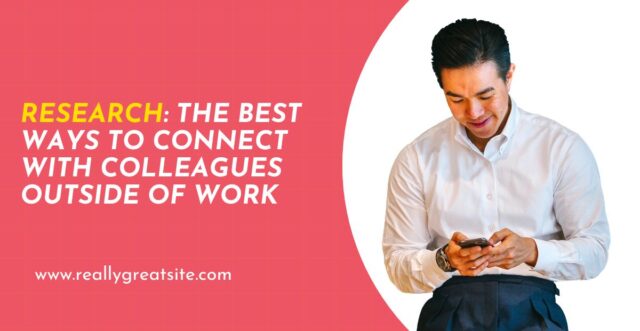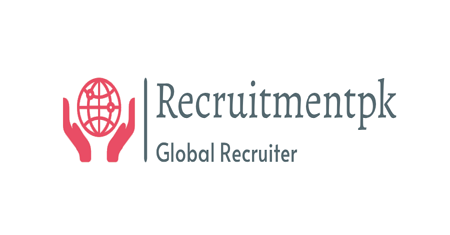 Connecting with colleagues outside of work can be a tricky endeavor, especially for leaders. On the one hand, it can be a swift means of creating more personalized relationships and stronger bonds: Studies show that connecting outside of work can help leaders and employees thrive in their work and improve team performance. On the other hand, leaders (rightly!) see that blurring the lines between work and non-work boundaries poses real risks. In the wrong setting, these encounters can lead to uncomfortable interactions that tarnish work relationships or potentially jeopardize a professional image that’s taken years to build.
Connecting with colleagues outside of work can be a tricky endeavor, especially for leaders. On the one hand, it can be a swift means of creating more personalized relationships and stronger bonds: Studies show that connecting outside of work can help leaders and employees thrive in their work and improve team performance. On the other hand, leaders (rightly!) see that blurring the lines between work and non-work boundaries poses real risks. In the wrong setting, these encounters can lead to uncomfortable interactions that tarnish work relationships or potentially jeopardize a professional image that’s taken years to build.
After years of exploring whether and how this type of boundary blurring can be a worthwhile risk to take, a key factor that determines the outcome of these interactions is where these connections happen.
The results of a multi-year study interviewing organizational leaders and employees across a wide range of professions in the U.S. and Europe revealed four features of non-work settings that are crucial for reaping the benefits of boundary-blurring interactions while lessening the risks. Specifically, these non-work settings are:
- Flexible: The setting can be used in many ways to meet people’s needs, such as an all-levels yoga class near the office or an online platform that can be used when and where it’s convenient.
- Legitimate: The setting is seen as socially acceptable by others in the workplace, such as a book club or running club.
- Virtuous: The setting is viewed as inherently good or moral, such as a gym, library, or nonprofit organization.
- Playful: The setting sparks a sense of fun and playfulness, like a festival in a park or an improv class.
The more that non-work spaces have these characteristics, the more potential they have to function as what can be termed a “relational holding environment” — a non-work setting that helps colleagues bond by easing the unpleasant feelings associated with blurring their work and non-work lives.
When leaders and employees connect in a relational holding environment, it can fuel stronger relationships, provide better access to information, and create opportunities for swifter career advancement.
A Case Study on Relational Holding Environments
While a range of contexts can be used as a setting for blurring work and non-work boundaries (e.g., an interest-based club, a cohort-based professional development opportunity), one powerful example is Peloton — a virtual exercise platform that has been particularly effective at building deeper extra-work connections.
It’s been used by bosses, peers, and others in the same profession who’ve never even met in person. Sometimes this happens through hashtags that identify users by company or industry. Other times, leaders mention the platform in large meetings and invite others to connect, or someone sets up a Slack channel or shared spreadsheet to find each other.
Why are people comfortable enough to blur their work and non-work lives in this space?
Peloton embodies the four key characteristics:
- Flexible: Remote-friendly and suitable for all fitness levels
- Legitimate: Popular and widely accepted
- Virtuous: Tied to wellness and personal growth
- Playful: Fun music, upbeat instructors, and gamification
As one leader put it:
“In the corporate workplace… maybe mostly for women… there’s this belief that we always have to be strong and we have to be stoic… By riding together, all of a sudden, you’re extremely vulnerable… you really just get to see the true human element of a person instead of just the façade.”
These shared experiences led to deeper relationships and expanded networks. Participants described being more comfortable speaking to people they would have previously avoided—senior leaders included. They also became more open, candid, and collaborative.
The Benefits of Relational Holding Environments
1. Making Positive Connections Across Status Differences
Leadership roles can be isolating. But in a relational holding environment, leaders are able to connect with higher-ups, peers, and team members in a safe and authentic way.
For example, one person said they felt intimidated by a senior leader—but bonding over Peloton made that connection feel accessible and real.
Another shared that social media groups linked to the platform allowed them to connect with peers from other companies and exchange valuable insights.
A senior manager also noted that this environment helped him connect more naturally with direct reports.
“It has been cool to see how I can connect deeper or differently with people that I already know and already have an actual connection with.”
2. Furthering Career Advancement
Several participants reported that engaging in these spaces led to unexpected career growth. A mid-level leader credited her promotion to the visibility and advocacy she received from a senior leader who’d observed her consistency and discipline through the platform.
3. Building a Culture of Support
Especially in large organizations, employees appreciated opportunities to interact with leaders in a personal, meaningful way. One employee shared the excitement of riding with the CEO on a milestone ride, saying:
“We were all in different departments, different levels of the organization, but found this commonality.”
Conclusion
As the boundaries between work and non-work lives become increasingly blurred, the question is not whether to connect with colleagues outside of work—but where and how to do it effectively.
By identifying or creating relational holding environments—spaces that are flexible, legitimate, virtuous, and playful—leaders can strengthen workplace culture, unlock powerful new connections, and help people across all levels of an organization thrive.
The meaningful relationships built in these settings are more than just moments of bonding. They are an antidote to professional isolation—and a foundation for deeper trust, collaboration, and support.

